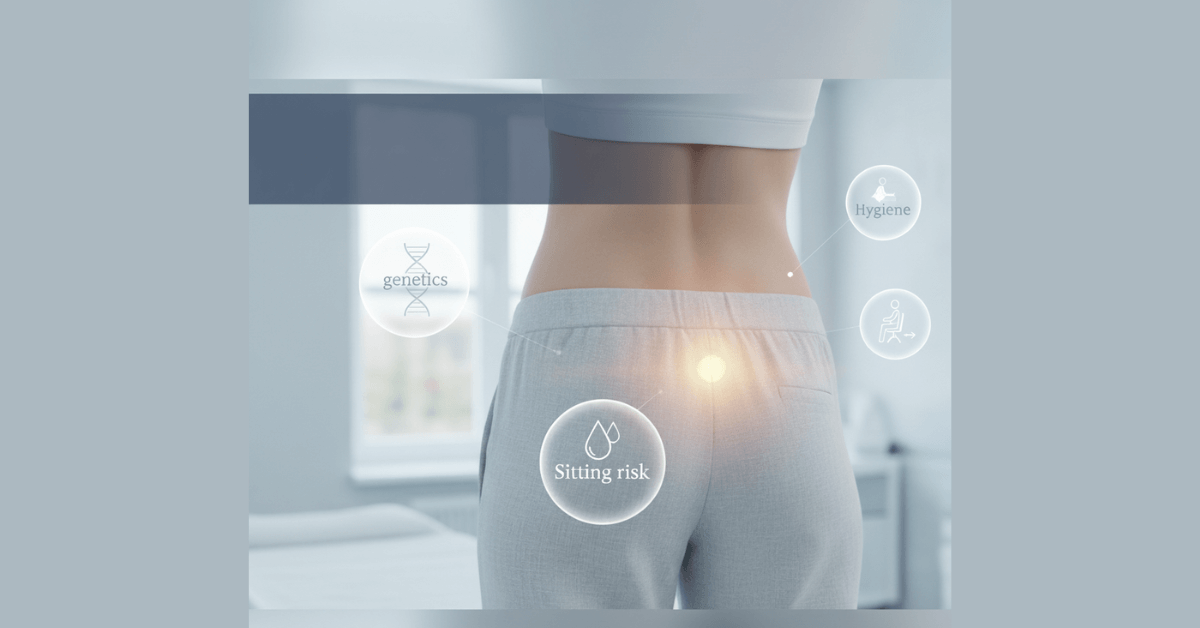Painful Lump Near Tailbone: How to Identify a Pilonidal Cyst
Do you feel a painful lump near tailbone? Many people experience this uncomfortable situation. Often, this indicates a pilonidal cyst. Identifying this condition quickly is very important. Early action can prevent more serious problems. Therefore, understanding the signs helps you seek proper care. This guide offers clear, fact-checked information.
What is a Pilonidal Cyst?
Firstly, what exactly is a pilonidal cyst? It is a common skin condition. This cyst forms near the top of the buttocks crease. Hair, skin debris, and dirt often get trapped. These elements then burrow into the skin. Consequently, they cause an infection. This infection creates a tiny tunnel or sinus. This tunnel leads to the cyst. Patients frequently discover an abscess near tailbone. This lump can be quite painful. It feels sore and tender to the touch.
Recognizing Pilonidal Cyst Symptoms
Now, let’s discuss common pilonidal cyst symptoms. You will likely feel a lump. This lump appears above the anal area. Initially, it may seem small. However, it can grow larger over time. Swelling often accompanies the lump. Redness around the area is also typical. Many people notice significant pain. This pain worsens when sitting. Therefore, sitting becomes very uncomfortable.
Furthermore, drainage is a key symptom. This drainage may be pus. It might also contain blood. The fluid often has a foul smell. This indicates an active infection. Some people even develop a fever. Feeling tired or unwell is also possible. These systemic signs mean a more severe infection. Therefore, pay close attention to all these details. They are crucial for pilonidal disease identification.
Common Tailbone Lump Causes
So, why does a painful lump near tailbone develop? Several factors contribute to tailbone lump causes. Hair is the primary culprit. Loose hair often pushes into the skin. This occurs in the gluteal crease. Friction from clothing also plays a role. Prolonged sitting is another big factor. Certain occupations increase risk. Truck drivers, for example, are often affected. Those with coarse or abundant body hair are more prone. Family history can also increase your risk. Furthermore, obesity is a contributing factor. Poor hygiene can aggravate the condition. However, it is not the sole cause. These are the main elements causing this uncomfortable condition.
Differentiating an Abscess Near Tailbone
Sometimes, you might simply have an abscess near tailbone. An abscess is a collection of pus. It forms due to bacterial infection. A pilonidal cyst often becomes an abscess. Therefore, the terms are frequently related. However, other types of abscesses exist. A simple skin abscess usually has no hair involvement. Conversely, a pilonidal abscess specifically involves hair. It also has that sinus tract. This distinction is vital for treatment. Doctors must treat the underlying cyst. Simply draining an abscess might not be enough. The problem may return without proper care. Therefore, correct diagnosis is paramount.
When to Seek Medical Attention
Understanding when to see a doctor is critical. Do not delay if you have a painful lump near tailbone. Seek help immediately if pain intensifies. Likewise, if the lump grows rapidly, consult a doctor. Fever is a definite red flag. Any pus or foul-smelling drainage needs attention. These are clear signs of infection. Ignoring these symptoms can lead to complications. The infection can spread further. Cellulitis, a skin infection, is possible. Furthermore, it might create multiple sinus tracts. This makes future treatment more complex. Prompt medical evaluation is always the best course.
The Diagnostic Process
What happens when you visit the doctor? Your doctor will perform a physical exam. They will inspect the lump and look for the sinus opening. They will also check for swelling and redness. Usually, no special tests are needed. The diagnosis is often visual. Occasionally, imaging might be ordered. This helps rule out other conditions. An MRI or ultrasound shows the extent. They reveal deep sinus tracts. This is especially true for recurrent cases. A proper diagnosis confirms pilonidal disease identification. This guides your best treatment plan.
Treatment Options for Pilonidal Cysts
Fortunately, many treatment options exist. Your doctor tailors treatment to your case. If infected, drainage is often first. This provides immediate pain relief. Incision and drainage (I&D) is a common procedure. Antibiotics may also be prescribed. They help fight the infection. However, antibiotics do not cure the cyst. Definitive treatment often involves surgery.
Various surgical methods are available. Minimally invasive options are now popular. One such option is SiLaC (Sinus Laser-Assisted Closure). This procedure uses laser energy effectively. The laser closes the infected sinus tract. SiLaC results in fast healing. Patients return to daily life very quickly. Another option is minimal excision. This removes the cyst. It leaves a smaller wound.
Conversely, some cysts need advanced methods. The Cleft Lift surgery is very effective. It reshapes the gluteal crease. This reduces recurrence significantly. Another option is wide excision. This removes the entire diseased area. Your doctor discusses the best approach. They consider your specific pilonidal cyst symptoms
Preventing Recurrence and Future Lumps
Preventing recurrence is key. Good hygiene is very important. Keep the area clean and dry. Avoid prolonged sitting whenever possible. Take breaks and stand often. Hair removal can also help. Shaving or laser removal reduces risk. Consult your doctor for specific advice. They guide you on the best practices. Following these steps greatly lowers your chances. This helps avoid another painful lump near tailbone. Maintaining a healthy weight also helps. Reducing friction in the area is beneficial. Proactive steps make a real difference.
Living with and Managing Pilonidal Disease
Living with pilonidal disease identification can be challenging. However, effective management is possible. Many people find lasting relief. Education is your strongest tool. Understand your condition fully. Follow your doctor’s instructions carefully. Do not hesitate to ask questions. Support groups can also provide comfort. They offer shared experiences and advice. Remember, you are not alone. Effective solutions exist for this condition. A proactive approach yields the best results.
Final Thoughts
In conclusion, a painful lump near tailbone needs attention. Identifying a pilonidal cyst early prevents complications. Recognize the pilonidal cyst symptoms. Understand the common tailbone lump causes. Be aware of an abscess near tailbone. Seek professional medical advice promptly. Your health and comfort are most important. Take charge of your well-being today.



